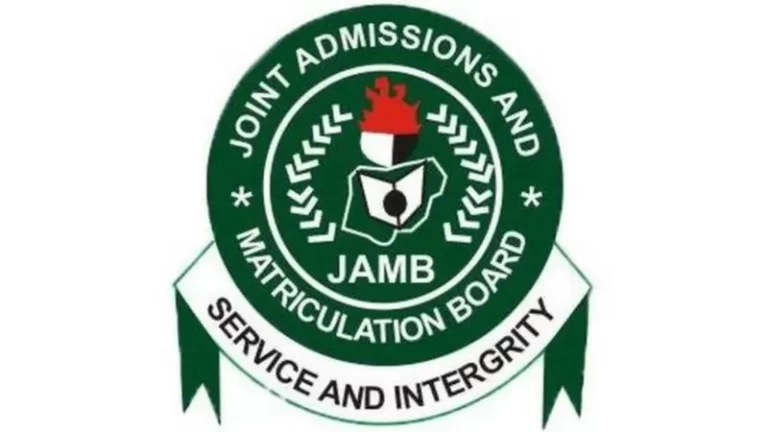Waec

Biology-Obj
1CCBBBBABAB
11DCABACAADD
21BDADDDABAA
31ACCAACCCCD
41BABCADCBCC
(5ai)
Competition is the struggle between organisms for limited resources, such as food, water, shelter, and light, in a habitat.
(5aii)
(i)Intraspecific competition
(ii)Interspecific competition
(5aiii)
(i)Food
(ii)Water
(iii)Shelter
(iv)Light
(5aiv)
Competition plays a crucial role in succession, as it influences the survival and growth of organisms in a habitat. As one species outcompetes another, it can lead to changes in the population dynamics and ultimately shape the community structure, driving succession.
(5bi)
Structural adaptation refers to the physical changes that occur in an organism’s body structure to better suit its environment and survive in its habitat.
(5bii)
(i)Body shape and size
(ii)Limbs and appendages (e.g., wings, fins)
(iii)Skin and body coverings (e.g., fur, feathers, scales)
(iv)Specialized organs (e.g., eyes, ears, nose)
(5c)
(i) DNA fingerprints
(ii) Facial features
(iii) Hair characteristics
(iv) Blood type
(5d)
TABULATE
Under Three types of adaptive coloration in animals.
(i)Camouflage
(ii)Warning Coloration (Aposematism)
(iii)Mimicry
TABULATE
Under An example of an animal exhibiting this type of coloration is the
(i)chameleon
(ii)poison dart frog
(iii)Monarch butterfly
(5e)
(i)Orchids (e.g., Phalaenopsis, Dendrobium)
(ii)Bromeliads (e.g., Aechmea, Guzmania)
(iii)Strangler Figs (e.g., Ficus aurea, Ficus benghalensis)
SECTION-I(A) ANSWER ONLY TWO TAKE NOTE
(1a)
(i) Glomerulus:
The glomerulus filters blood to form a filtrate, which includes water, ions, and small molecules like glucose and amino acids, while retaining larger molecules such as proteins and cells.
(ii) Bowman’s Capsule:
The Bowman’s capsule collects the filtrate produced by the glomerulus and funnels it into the proximal convoluted tubule.
(iii) Proximal convoluted tubule:
The proximal convoluted tubule reabsorbs essential substances such as glucose, amino acids, and ions (e.g., sodium and chloride) from the filtrate back into the blood.
(iv) Distal convoluted tubule:
The distal convoluted tubule fine-tunes the reabsorption of ions and water, and it secretes additional waste products into the filtrate, helping to regulate electrolyte balance and pH.
*USE THIS 1b, A LITTLE CORRECTION MADE… Contractile vacuole column added*
(1b)
TABULATE
=ORGANISM=
(i) Amoeba
(ii) Flatworms
(iii) Earthworm
(iv) Cockroach
(v) Human
(vi) Plant
=STRUCTURE FOR EXCRETION=
(i) Contractile vacuole
(ii) Flame cells
(iii) Nephridia
(iv) Malpighian tubules
(v) Kidneys
(vi) Stomatal pore
=FORM IN WHICH WASTE IS EXCRETED BY ORGANISM=
(i) Water
(ii) Ammonia
(iii) Urea
(iv) Uric acid
(v) Liquid (urine)
(vi) Oxygen, carbon dioxide, and water vapor
(1c)
(i) Oxygen
(ii) Carbon dioxide
(iii) Water vapor
(iv) Resins
(v) Gums
USE THIS ONE IS MORE COMPLETE
(2a)
(i) Mouth;
The mouth is responsible for the initial mechanical breakdown of food through chewing and the enzymatic breakdown of starches through the action of saliva.
(ii) Skin;
The skin regulates body temperature through the process of sweating, which also helps to excrete excess salts and maintain homeostasis.
(iii) Tongue;
The tongue assists in the manipulation of food for chewing and swallowing, and contains taste buds that help in the sensory evaluation of food.
(iv) Kidney;
The kidneys filter blood to remove waste products and excess substances, producing urine, which helps to maintain the body’s fluid and electrolyte balance.
(v) Stomach;
The stomach produces gastric juices, including hydrochloric acid and digestive enzymes, which help in the breakdown of food into a semi-liquid form called chyme.
(vi) Small Intestine;
The small intestine is the primary site for nutrient absorption; it continues the process of digestion with the help of enzymes and bile, and absorbs nutrients into the bloodstream.
(vii) Large Intestine;
The large intestine absorbs water and salts from the material that has not been digested as food, and compacts the remaining material into feces for excretion.
(viii) Liver;
The liver produces bile, which aids in the digestion and absorption of fats, and processes nutrients absorbed from the small intestine, detoxifying harmful substances and storing nutrients.
(2b)
(i) Mouth (salivary glands produce amylase)
(ii) Stomach (produces pepsin)
(iii) Small intestine (produces various enzymes such as maltase, lactase, and sucrase; receives enzymes from the pancreas)
(2c)
(i) Amylase (in saliva) – Breaks down starches into sugars.
(ii) Pepsin (in stomach) – Breaks down proteins into peptides.
(iii) Lipase (from pancreas) – Breaks down fats into fatty acids and glycerol.
(2d)
(i) Glucose (from the breakdown of carbohydrates)
(ii) Amino acids (from the breakdown of proteins)
(2ei)
Excess salt can lead to increased blood pressure due to the retention of water, which increases the volume of blood.
(2eii)
(i) Energy – Carbohydrates in cassava provide a source of energy.
(ii) Protein – Groundnut soup contains proteins necessary for body repair and growth.
(iii) Nutrients – The meal provides essential vitamins and minerals required for overall health.
(3ai)
(i) Discoloration: The meat may turn brown or green.
(ii) Mold growth: Visible mold or fungal growth may appear on the surface.
(iii) Odor: A foul smell or strong odor may develop due to bacterial growth.
(iv) Texture: The meat may become slimy or sticky.
(3aii)
Decomposition (or putrefaction) caused by microbial activity.
(3aiii)
TABULATE PLEASE
=FOUR METHODS OF PRESERVING THE MEAT=
(i) Refrigeration/Freezing
(ii) Salting
(iii) Smoking
(iv) Drying/dehydration
=ONE PRINCIPLE INVOLVED IN THE PRESERVATION METHOD=
(i) Low temperature slows down microbial growth
(ii) Salt dehydrates microbes and inhibits their growth
(iii) Smoke contains compounds that kill or inhibit microbes
(iv) Removal of water inhibits microbial growth
(3aiv)
(i) Temperature: High temperatures can accelerate the growth of bacteria and fungi, leading to faster decomposition of the meat.
(ii) Humidity: High humidity levels can create a conducive environment for microbial growth, increasing the rate of spoilage.
(3b)
(i) Dried maize grains: Airtight storage (to prevent moisture absorption and pest infestation)
(ii) Fresh tomatoes: Canning (to prevent spoilage and extend shelf life)
(iii) Vegetables: Freezing (to retain nutrients and prevent spoilage)
(iv) Beans: Drying (to reduce moisture content and prevent microbial growth)
(v) Milk: Pasteurization (to kill harmful bacteria and extend shelf life)
Another Bonuses
(4ai)
TABULATE PLEASE
=CELL=
(i) Onion cell
(ii) Sperm cell
(iii) Pollen grain
(iv) Ovum
(v) Guard cell
(vi) Cheek cell
=TYPE OF CELL DIVISION=
(i) Mitosis
(ii) Meiosis
(iii) Meiosis
(iv) Meiosis
(v) Mitosis
(vi) Mitosis
=SET OF CHROMOSOMES=
(i) Diploid
(ii) Haploid
(iii) Haploid
(iv) Haploid
(v) Diploid
(vi) Diploid
(4aii)
Mitosis is a type of cell division in which a single cell divides into two daughter cells that are genetically identical to the parent cell. It is responsible for growth, development, and tissue repair in multicellular organisms.
(4b)
Parents with blood groups A or B could have an offspring with blood group O if both parents are heterozygous for their blood group alleles. In this case, each parent would contribute one A or B allele and one O allele to the offspring, resulting in the genotype OO, which expresses the blood group O phenotype.
(4c)
Genes are involved in the process of evolution through mechanisms such as mutation, natural selection, genetic drift, and gene flow. Mutations introduce genetic variation, which can be acted upon by natural selection, leading to adaptations and changes in allele frequencies over generations, ultimately driving evolutionary change.
RECOMMENDED TOPICS
- JAMB 2025 UTME/DE registration document – step-by-step on how to apply for UTME and DE

- JAMB postpones 2025 UTME Registration to February 3rd

- JAMB Officially Announces 2025 UTME Registration, Exam, Mock Dates, Cost and Important Details

- The official reading novel for Jamb 2025 is Lekki Headmaster

- Subjects for Computer Science in JAMB for Guaranteed Success


